
So you’re wondering if vinegar is a viable option for descaling your trusty coffee maker? Well, wonder no more! In this article, we’ll explore the effectiveness of vinegar in removing those pesky limescale deposits that can hinder the performance of your coffee maker. We’ll delve into the dos and don’ts of using vinegar, provide step-by-step instructions, and even offer some alternative descaling methods if you’re not a fan of that vinegar smell. So grab a cup of joe and get ready to discover the wonders of vinegar in rejuvenating your coffee maker!
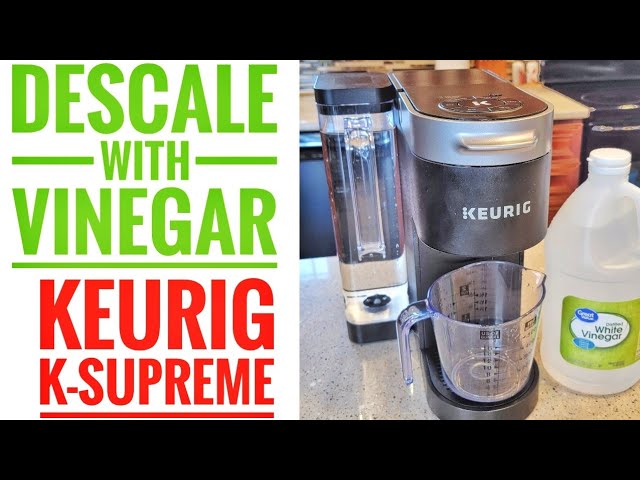
Overview of Descaling Coffee Makers
What is descaling?
Descaling is the process of removing mineral deposits and limescale buildup from the inner workings of your coffee maker. Over time, minerals from water can accumulate, resulting in decreased performance and a less than optimal cup of coffee. Descaling helps to restore your coffee maker to its full potential.
Importance of descaling
Regular descaling is essential for maintaining the performance and longevity of your coffee maker. When mineral deposits build up, they can clog the heating elements, affect water flow, and even alter the taste of your coffee. By descaling regularly, you can ensure that your coffee maker operates efficiently and consistently delivers a delicious brew.
Frequency of descaling
The frequency of descaling depends on the hardness of your water and how often you use the coffee maker. In general, it is recommended to descale every 3-6 months to prevent mineral buildup. However, if you notice a decrease in performance or a change in the taste of your coffee, it may be necessary to descale more frequently.
Using Vinegar for Descaling
Why vinegar is a popular choice
Vinegar is a popular choice for descaling coffee makers due to its acidic properties. The acetic acid in vinegar helps to dissolve mineral deposits and remove limescale buildup effectively. Additionally, vinegar is readily available, affordable, and safe to use.
Type of vinegar to use
When descaling your coffee maker with vinegar, it is important to use white distilled vinegar. This type of vinegar is clear and does not contain any impurities that could potentially affect the taste of your coffee. Avoid using other types of vinegar, such as apple cider or red wine vinegar, as they may leave behind unwanted flavors or stains.
Step-by-step guide
To descale your coffee maker using vinegar, follow these simple steps:
- Gather the necessary supplies, including white distilled vinegar and water.
- Empty any remaining water from the coffee maker and remove the used coffee grounds.
- Mix a solution of equal parts vinegar and water.
- Pour the vinegar and water solution into the water reservoir of your coffee maker.
- Start a brewing cycle, allowing the solution to run through the coffee maker.
- Once the brewing cycle is complete, empty the vinegar and water solution from the carafe and water reservoir.
- Run a couple of cycles with clean water to rinse out any remaining vinegar residue.
- Clean the coffee pot and filter thoroughly before using your coffee maker again.
Alternative options to vinegar
While vinegar is a commonly used descaling agent, there are alternative options available. Citric acid, lemon juice, commercial descaling solutions, and even baking soda can be used to effectively descale a coffee maker. Each option has its own benefits and drawbacks, so it’s important to choose the option that best suits your needs and preferences.
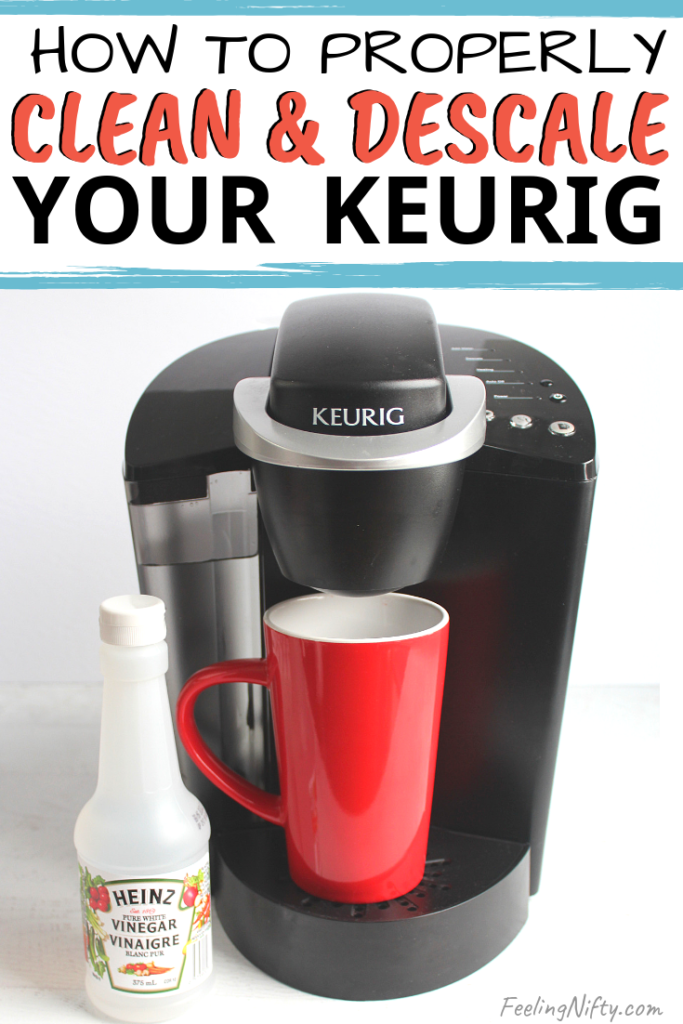
Benefits of Using Vinegar
Effectiveness
Vinegar is highly effective at removing mineral deposits and limescale buildup from coffee makers. The acetic acid in vinegar dissolves the minerals, allowing for a thorough cleaning of the inner components. It can restore your coffee maker’s performance and enhance the flavor of your coffee.
Affordability
One of the key advantages of using vinegar for descaling is its affordability. Compared to commercial descaling solutions or specialized products, vinegar is a cost-effective option that can deliver excellent results. It is readily available in most households, making it a convenient choice for regular descaling maintenance.
Environmentally friendly
Using vinegar as a descaling agent is an environmentally friendly choice. Vinegar is a natural and biodegradable substance that does not introduce harmful chemicals into the environment. By opting for vinegar, you can maintain the cleanliness of your coffee maker while minimizing your ecological footprint.
Multi-purpose usage
Aside from descaling coffee makers, vinegar has numerous other household uses. It can be used as a natural cleaner for various surfaces, including countertops, windows, and bathrooms. It is also effective at removing stains, eliminating odors, and even unclogging drains. Investing in vinegar for your descaling needs means you’ll have a versatile cleaning solution on hand.
Potential Drawbacks
Strong odor
While vinegar is an effective descaling agent, its strong odor can be off-putting to some individuals. The smell of vinegar can linger after the descaling process, and it may take a few brewing cycles to dissipate completely. If you are sensitive to strong odors, consider using alternative descaling methods or utilizing proper ventilation during the process.
Residual taste
When using vinegar for descaling, it is crucial to rinse the coffee maker thoroughly to remove any residual taste. If not rinsed adequately, the vinegar flavor can transfer into subsequent brews. This can negatively impact the taste of your coffee, resulting in a less enjoyable experience. Taking the time to rinse your coffee maker properly can help ensure a clean and neutral flavor.
Compatibility issues
Vinegar is generally safe to use on most coffee makers, but it is important to check the manufacturer’s instructions before proceeding with descaling. Some coffee makers, especially those with delicate components or specialized materials, may not be compatible with vinegar or require alternative descaling methods. Always follow the guidelines provided by the manufacturer to avoid any potential damage.
Effect on rubber and plastic components
Although vinegar is safe for most coffee makers, prolonged exposure to vinegar can potentially damage rubber seals, gaskets, or plastic parts. It is important to limit the contact time between vinegar and these components during the descaling process. If you notice any deterioration or degradation of these materials, consider using alternative descaling methods.
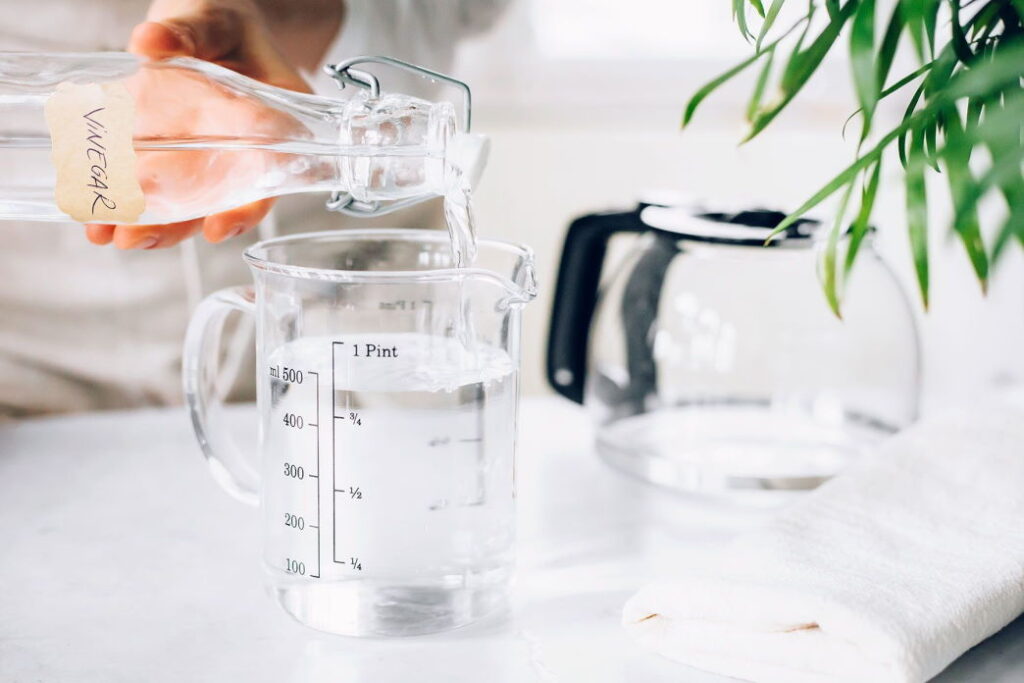
Preventive Measures
Regular cleaning
In addition to descaling, regular cleaning of your coffee maker is essential for maintaining optimal performance. Clean the removable parts, such as the brew basket and carafe, after each use. Wipe down the exterior surfaces, including the water reservoir and warming plate, to prevent the buildup of coffee oils and residue.
Water quality
The quality of the water you use in your coffee maker can significantly impact the frequency of descaling. If you have hard water, which is high in mineral content, you may need to descale more frequently. Consider using filtered water or a water softening system to reduce mineral buildup and prolong the time between descaling.
Using a water filter
Installing a water filter in your coffee maker can help remove impurities and reduce the mineral content in the water. This can not only improve the taste of your coffee but also reduce the frequency of descaling. Check with your coffee maker’s manufacturer for compatible water filter options or consider using a standalone water filter pitcher.
Using descaling products
While vinegar is a popular and effective descaling option, there are also descaling products available specifically formulated for coffee makers. These products are designed to target mineral deposits and limescale buildup efficiently. If you prefer using commercial descaling solutions, ensure that they are compatible with your coffee maker and follow the manufacturer’s instructions for optimal results.
Steps for Descaling Coffee Maker with Vinegar
Gathering the necessary supplies
Before starting the descaling process, gather all the necessary supplies. You will need white distilled vinegar, water, a clean cloth or sponge, and a coffee pot.
Preparing the coffee maker
Ensure that the coffee maker is turned off and unplugged. Remove any remaining coffee grounds and empty the water reservoir. Discard used filters, if applicable.
Mixing vinegar and water solution
In a separate container, mix equal parts white distilled vinegar and water. The amount needed will depend on the size of your coffee maker. Refer to the coffee maker’s manual for guidance.
Running the descaling cycle
Pour the vinegar and water solution into the coffee maker’s water reservoir. Place the coffee pot back in position. Turn on the coffee maker and begin a brewing cycle, allowing the solution to run through the machine.
Rinsing the coffee maker
Once the brewing cycle is complete, discard the vinegar and water solution from the coffee pot. Rinse the water reservoir thoroughly with clean water. Run a couple of brewing cycles with fresh water to ensure any remaining vinegar residue is completely rinsed away.
Cleaning the coffee pot and filter
Clean the coffee pot and filter with soapy water or in the dishwasher, if dishwasher-safe. Ensure they are thoroughly rinsed before using them again.
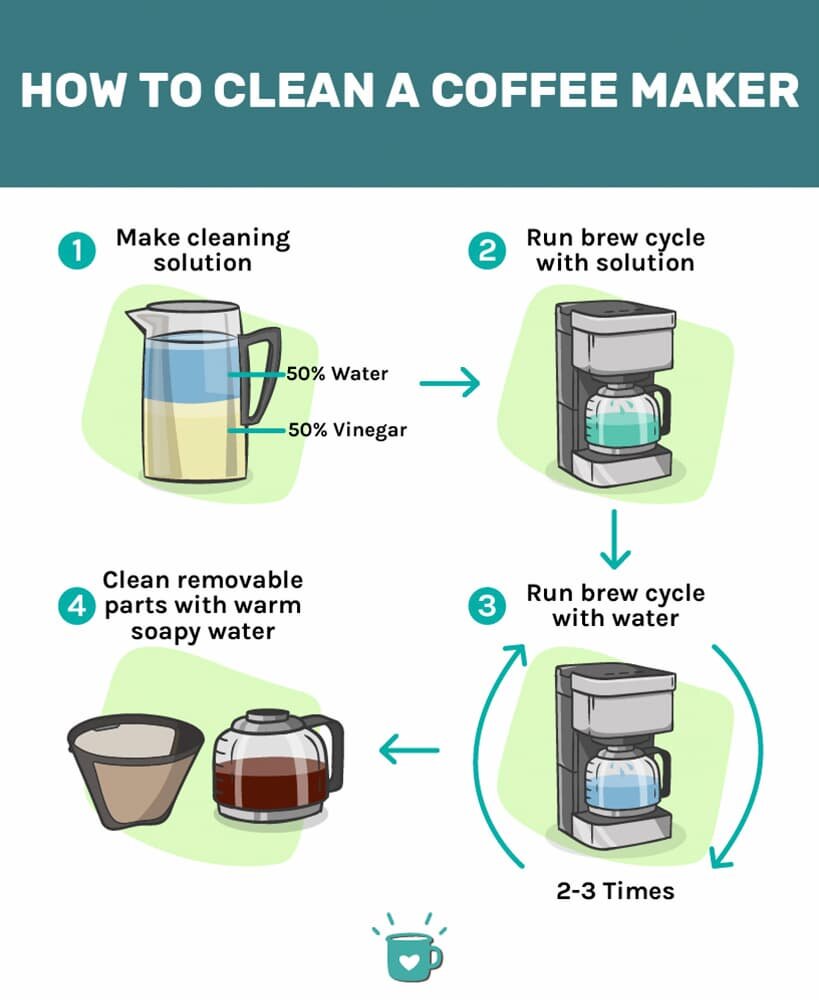
Alternative Descaling Methods
Citric acid
Similar to vinegar, citric acid can effectively descale coffee makers. It is a natural and odorless option that can remove mineral deposits without leaving behind any lingering taste or odor. Follow the same steps as descaling with vinegar, using a citric acid and water solution instead.
Lemon juice
Lemon juice is another natural alternative for descaling coffee makers. Its citric acid content helps dissolve mineral deposits and limescale buildup. Mix equal parts lemon juice and water, and follow the same descaling steps as with vinegar.
Commercial descaling solutions
If you prefer a ready-to-use option, there are commercial descaling solutions available on the market specifically formulated for coffee makers. These solutions are typically sold in convenient packets or bottles, offering a hassle-free descaling experience. Follow the instructions provided with the product for best results.
Using baking soda
Baking soda, when combined with water, can create a paste that effectively removes stains and residue from the coffee pot and other components of the coffee maker. Scrub the affected areas gently with the baking soda paste, rinse thoroughly, and wipe clean.
Common Mistakes to Avoid
Untested cleaning solutions
Using untested or unknown cleaning solutions can potentially damage your coffee maker. Stick to tested and proven methods, such as vinegar, citric acid, lemon juice, or commercial descaling products.
Using excessive vinegar
While vinegar is an effective descaling agent, using excessive amounts can lead to unwanted consequences. Follow the recommended proportions of vinegar and water to avoid damaging the coffee maker or leaving behind a vinegar taste.
Neglecting rinsing and cleaning steps
Thoroughly rinsing and cleaning the coffee maker, coffee pot, and filter after descaling is crucial. Neglecting these steps can result in residue buildup, affecting both the taste of your coffee and the performance of your coffee maker.
Improper descaling frequency
It is essential to descale your coffee maker regularly, following the recommended intervals based on your water hardness and usage frequency. Neglecting regular descaling can lead to mineral buildup, decreased performance, and a diminished coffee experience.
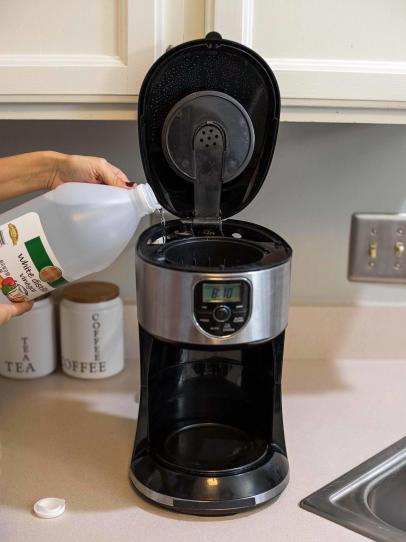
Troubleshooting
Removing stubborn scale deposits
If you encounter stubborn scale deposits that are not easily dissolved by vinegar or other descaling agents, you may need to resort to manual scrubbing. Use a soft brush or sponge to gently scrub the affected areas, being careful not to damage any sensitive components.
Dealing with persistent taste or odor
If you notice persistent taste or odor even after descaling, try running additional cycles of clean water through the coffee maker. This can help remove any remaining residue or aroma. If the issue persists, consider consulting the coffee maker’s manufacturer for further assistance.
Fixing coffee maker issues
If you encounter any issues with your coffee maker during or after descaling, such as irregular brewing, water leakage, or malfunctioning controls, refer to the manufacturer’s guide for troubleshooting instructions. In some cases, professional servicing may be required to address any technical or mechanical problems.
Professional servicing
If you are unsure about how to properly descale your coffee maker or encounter persistent issues, it is advisable to seek professional servicing. Trained technicians can assess and address any underlying problems, ensuring that your coffee maker operates at its best.
Conclusion
Using vinegar as a descaling agent for your coffee maker can effectively remove mineral deposits, restore performance, and enhance the flavor of your coffee. Regular descaling, along with proper cleaning and maintenance, is crucial for maintaining optimal performance and prolonging the lifespan of your coffee maker. Whether you choose vinegar or alternative descaling methods, the key is to prioritize the cleanliness and care of your coffee maker to consistently enjoy a delicious cup of coffee.
